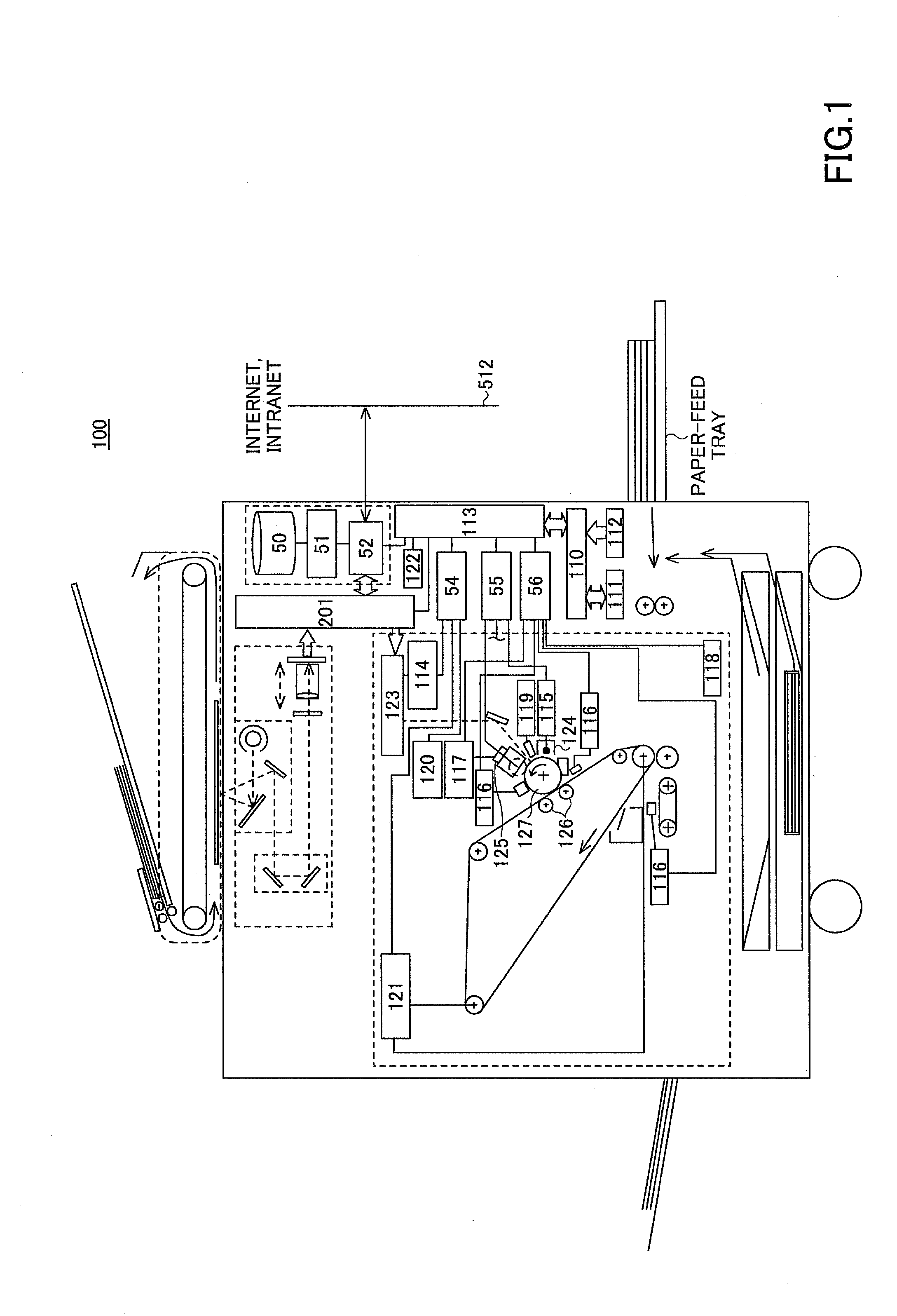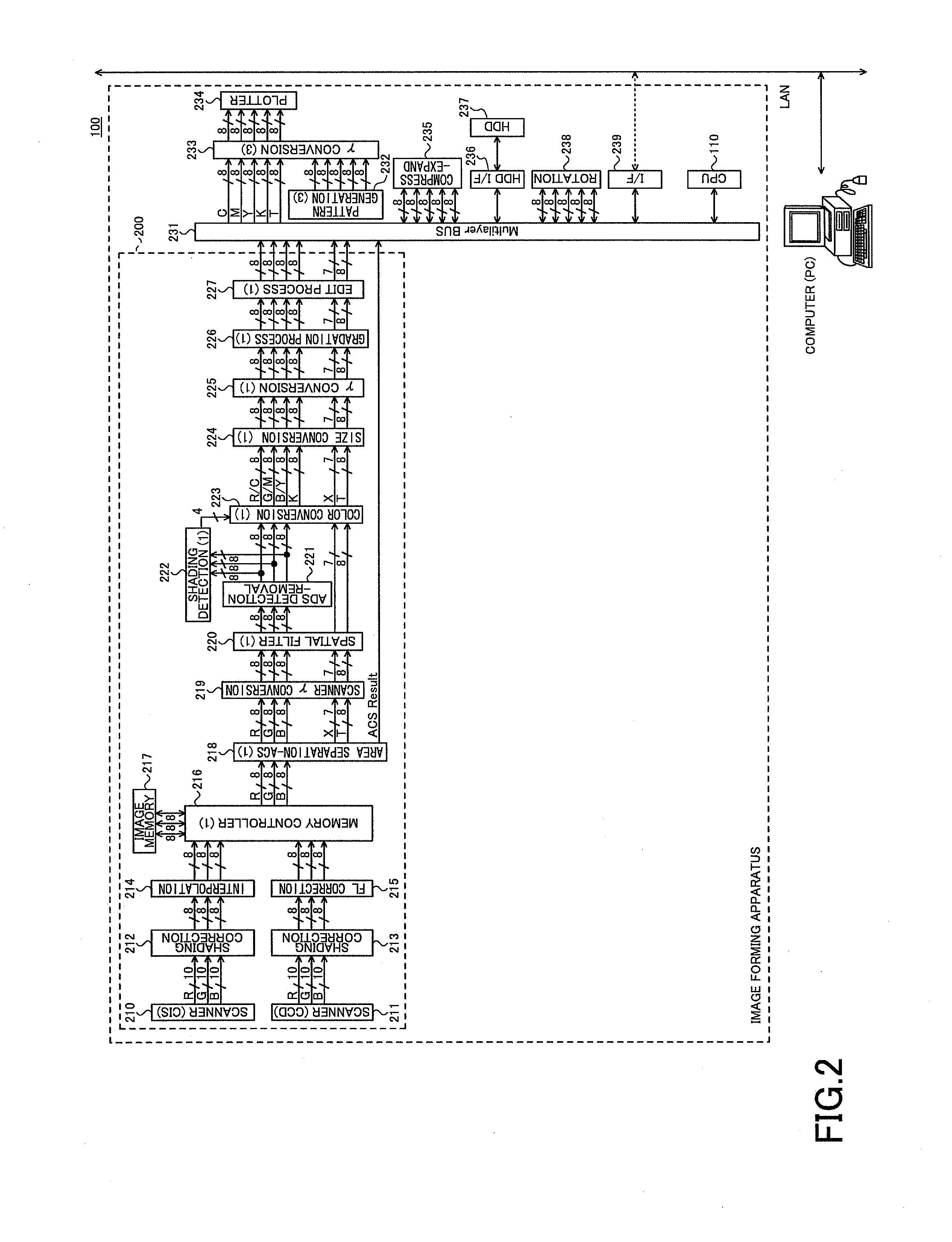Image forming apparatus, method of forming image, and computer-readable recording medium
- Summary
- Abstract
- Description
- Claims
- Application Information
AI Technical Summary
Benefits of technology
Problems solved by technology
Method used
Image
Examples
first embodiment
[0034]Next, the first embodiment will be described below with reference to drawings.
[0035]FIG. 1 is an explanatory view for explaining the structure of an image forming apparatus 100 of the first embodiment.
[0036]The image forming apparatus 100 of the present embodiment includes a main control unit (CPU, Central Processing Unit) 110, a RAM (Random Access Memory) 111, a ROM (Read Only Memory) 112, an interface I / O 113, a laser optical control unit 114, power circuits 115, optical sensors 116, a toner concentration sensor 117, an environment sensor 118, photosensitive surface potential sensors 119 (only one of which is shown in the drawings), a toner supply circuit 120, an intermediate transfer belt driver 121, an operations unit 122, a laser optical scanning system 123, charging devices 124 (only one of which is shown in the drawings), developing devices 125 (only one of which is shown in the drawings), bias rollers 126 (only one set of which is shown in the drawings), and photosensi...
second embodiment
[0124]Next, the second embodiment will be described below with reference to drawings. Only the method of determining the dispersion of the read value is different from that of the first embodiment. In the following embodiment, only the part different from the first embodiment will be explained.
[0125]FIG. 10 is a flowchart for explaining operations for determining a dispersion of the read values of the second embodiment. The processes of FIG. 10 correspond to the process of step S505 of FIG. 5.
[0126]In this embodiment, after the image data is read, the dispersion of the image data is determined based on a peak value of the frequency with respect to the read value, a width of the peak, a number of peaks or the like of the image data within a predetermined area formed by a predetermined number of pixels.
[0127]In this embodiment, the gloss applying unit 304 forms histograms of the pixels whose read values are more than or equal to a predetermined value (bright pixels) within the predete...
third embodiment
[0138]Next, the third embodiment will be described below with reference to drawings. Only the method of determining the dispersion of the read value where a dot (halftone dot) is detected in the third embodiment is different from that of the first embodiment. In the following embodiment, only the part different from the first embodiment will be explained.
[0139]FIG. 12 is a flowchart for explaining operations for determining a dispersion of the read values of the third embodiment.
[0140]In this embodiment, the area separation unit 303 detects whether the target pixel is a dot. When the target pixel is not the dot in step S1201 (No in step S1202), the gloss applying unit 304 performs the processes of FIG. 6 (step S1203). When the target pixel is detected to be the dot in step S1202 (Yes in step S1202), the gloss applying unit 304 detects a frequency component of the dot (step S1204). Subsequently, the gloss applying unit 304 removes the frequency component of the dot of the pixel which...
PUM
 Login to View More
Login to View More Abstract
Description
Claims
Application Information
 Login to View More
Login to View More - R&D
- Intellectual Property
- Life Sciences
- Materials
- Tech Scout
- Unparalleled Data Quality
- Higher Quality Content
- 60% Fewer Hallucinations
Browse by: Latest US Patents, China's latest patents, Technical Efficacy Thesaurus, Application Domain, Technology Topic, Popular Technical Reports.
© 2025 PatSnap. All rights reserved.Legal|Privacy policy|Modern Slavery Act Transparency Statement|Sitemap|About US| Contact US: help@patsnap.com



